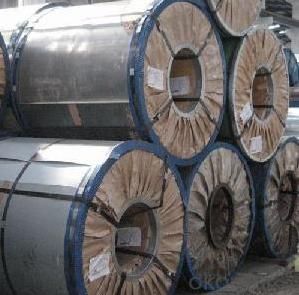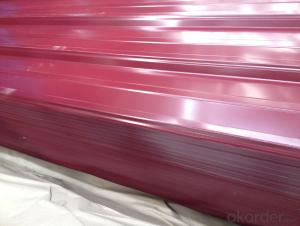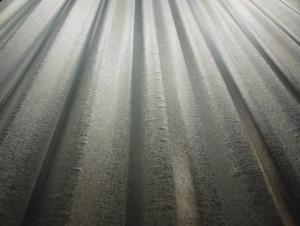Cold Rolled Steel Coil &Galvanized steel sheet
- Loading Port:
- Shanghai
- Payment Terms:
- TT OR LC
- Min Order Qty:
- 25 m.t.
- Supply Capability:
- 10000 m.t./month
OKorder Service Pledge
OKorder Financial Service
You Might Also Like
Basic Info.
Technique:Cold Rolled
Product Description
Cold Rolled steel sheets have good processability, with good flatness and excellent surface, are available with different thickness and width combinations; are mainly used to manufacture the high value-added products in automotive and appliance, beverage packaging, electronic, electrcial moor and building etc. The CR steel sheet include the oncoated steel steel , galvanzied steel sheet, tin plate and TFS, precoated steel sheet and electrical steel , etc.
Uncoated CR steel sheet
With the features of in line with the international highest standards in demension and shape, excellent surface finish and properties, the products are mainly used in home appliance and automobile industries.
Galvanized steel sheet(include HDG and EG)
With the features of good corrosion resistance, the products are mainly used in automobile, home appliance, electronics, building and machinery manufacture industries, etc.
Precoated steel sheet
With the features of enviromental protection and good processablility, long lasting surface durability, rich in colors, the products are maily used in building, home appliance and furniture industries, etc.
Electrical steel sheet
Mainly used to manufacture generating equipment, locomotive, industrial motor and home appliance
- Q: What is the maximum length of a steel sheet?
- The maximum length of a steel sheet can vary depending on various factors such as the manufacturing capabilities of the steel mill, transportation limitations, and customer requirements. However, in general, steel sheets can be produced in lengths ranging from a few feet to several hundred feet. Industrial-sized steel mills are capable of producing exceptionally long steel sheets, often exceeding 100 feet or more. These extended lengths are typically utilized in large-scale construction projects, such as bridges, industrial buildings, or shipbuilding. However, it is essential to note that the maximum length of a steel sheet is subject to practical constraints, such as the size of transportation vehicles or the limitations of handling equipment. Therefore, while it is possible to manufacture steel sheets of considerable length, practical considerations may restrict the maximum length that can be effectively utilized in different applications.
- Q: What are the environmental considerations of using steel sheets?
- Some of the environmental considerations of using steel sheets include the extraction and processing of raw materials, energy consumption during manufacturing, and the potential for air and water pollution. Additionally, the disposal of steel sheets at the end of their life cycle can contribute to waste management challenges. However, steel is also a highly recyclable material, and its use in construction and other industries can contribute to a more sustainable and circular economy.
- Q: Can the steel sheets be easily welded?
- Yes, steel sheets can be easily welded.
- Q: Can steel sheets be used in renewable energy applications?
- Yes, steel sheets can be used in renewable energy applications. Steel is widely used in the construction of wind turbines, solar panels, and other renewable energy infrastructure. It is durable, strong, and can withstand harsh environmental conditions, making it a suitable material for these applications. Additionally, steel is recyclable, which aligns with the sustainability goals of renewable energy projects.
- Q: Can steel sheets be used in the electronics industry?
- Indeed, the electronics industry does make use of steel sheets. Although plastic and aluminum are usually the preferred materials for manufacturing electronic devices, steel sheets can still contribute to the production process. In fact, steel sheets are frequently employed to fabricate structural elements, enclosures, brackets, and various other parts found within electronic devices. They offer robustness, longevity, and safeguard intricate electronic components. Additionally, steel sheets are utilized to shield electronic equipment from electromagnetic interference (EMI). Consequently, steel sheets possess numerous applications in the electronics sector, rendering them a suitable material selection for specific components and enclosures.
- Q: How do steel sheets compare to wood sheets?
- Steel sheets and wood sheets have distinct differences in terms of strength, durability, and use cases. Firstly, steel sheets are known for their exceptional strength and durability. They can withstand heavy loads, extreme weather conditions, and are highly resistant to warping, rotting, and insect damage. Wood sheets, on the other hand, are less robust and can be vulnerable to moisture, termites, and decay if not properly treated or maintained. In terms of versatility, steel sheets offer a wide range of applications. They are commonly used in construction, automotive, and manufacturing industries due to their high tensile strength and structural stability. Wood sheets, on the other hand, are often used in interior design, furniture making, and smaller-scale construction projects due to their natural aesthetic appeal and ease of manipulation. Additionally, steel sheets are fire-resistant, making them a safer option compared to wood sheets, which are combustible and can contribute to the spread of fire. Steel sheets also have a longer lifespan, requiring less maintenance and replacement compared to wood sheets, which may need regular refinishing, sealing, or replacement due to wear and tear. However, wood sheets have their advantages as well. They are typically more cost-effective than steel sheets, making them a popular choice for budget-conscious projects. Wood sheets also have better insulation properties, providing natural warmth and soundproofing qualities. Ultimately, the choice between steel sheets and wood sheets depends on the specific requirements of the project, including factors such as budget, desired aesthetics, structural needs, and environmental considerations.
- Q: Bathroom washing machine, galvanized steel and color steel which good?
- Infiltration of zinc is the function of zinc atoms to the steel parts, the steel plate has undergone a qualitative change, even if it does not scratch Yi Shengxiu
- Q: Are the steel sheets suitable for architectural applications?
- Indeed, architectural applications can certainly make use of steel sheets. Steel, being a versatile material, presents numerous benefits for architectural purposes. It possesses strength, durability, and the ability to withstand harsh weather conditions, thus making it an excellent choice for various architectural elements like roofing, cladding, and facades. Furthermore, steel sheets provide architects with design flexibility, enabling the creation of unique and innovative structures. Moreover, steel is an environmentally sustainable material due to its recyclability and long lifespan, making it an eco-friendly option for architectural applications. All in all, steel sheets serve as a dependable and versatile choice for architects who desire to incorporate structural integrity, aesthetic allure, and sustainability into their designs.
- Q: Can steel sheets be used for insulation?
- Steel sheets are not suitable for insulation as they lack the ability to retain heat or prevent effective heat transfer due to their good conductivity of heat and electricity. Instead, steel sheets can even conduct heat and cold, rendering them ineffective as insulators. On the other hand, materials like fiberglass, foam, or cellulose are far superior for insulation as they excel at trapping and preventing the transfer of heat, making them the ideal choice for insulation purposes.
- Q: Can the steel sheets be easily joined with adhesive?
- Indeed, adhesive is capable of easily joining steel sheets. The method of adhesive bonding is widely employed in connecting steel sheets due to its numerous benefits. Adhesives create a robust and long-lasting bond between the sheets, resulting in a seamless connection. Furthermore, they distribute stress evenly across the joint, thereby reducing the likelihood of failure. Moreover, adhesive bonding does not necessitate heat or specialized equipment, making it a cost-effective and efficient solution. However, it is crucial to carefully choose the appropriate adhesive for the specific type of steel, and proper surface preparation is essential to ensure optimal adhesion. All in all, when executed correctly, adhesive bonding effectively joins steel sheets together.
Send your message to us
Cold Rolled Steel Coil &Galvanized steel sheet
- Loading Port:
- Shanghai
- Payment Terms:
- TT OR LC
- Min Order Qty:
- 25 m.t.
- Supply Capability:
- 10000 m.t./month
OKorder Service Pledge
OKorder Financial Service
Similar products
Hot products
Hot Searches
Related keywords


























